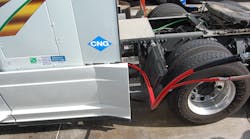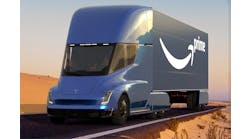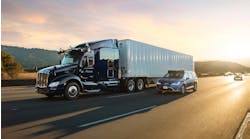Here’s a thought: will alternative fuels get kneecapped by the fuel economy improvements mandated for heavy trucks via the Phase 2 standards within greenhouse gas (GHG) emission rules?
That seems to be one of the conclusions made by the Energy Information Administration (EIA) in a new research paper authored by David Stone and Melissa Lynes.
They argue that the “most significant effect” of the Phase 2 standards is a projected 18% drop in diesel consumption by medium- and heavy-duty vehicles by 2040.
However, as fuel economy for diesel trucks increases due to the Phase 2 rules, Stone and Lynes believe there will be “less incentive to pay high capital costs for natural gas and propane vehicles” despite their lower fuel costs, resulting in a shift away from natural gas and propane back toward conventional diesel and gasoline-fired equipment.
“Although the standards do not start until model year 2021, manufacturers are expected to begin adoption beforehand to ensure initial compliance,” they wrote.
That’s why they expect new vehicle average fuel economy to increase for all size classes in the agency’s analysis of the Phase 2 standards, with combined Class 3–8 fuel economy jumping by 28%.
“After 2027 the standards are held constant, but technology adoption [should] continue as new technologies become available,” Stone and Lynes said. “In 2040, new vehicle fuel efficiency averages 10.6 miles per gallon gasoline equivalent in the Phase 2 standards case, representing a 33% improvement compared to the Reference case. The improvements represent over-compliance as [OEMs] continue to adopt cost-effective technologies beyond 2027.”Though there will be a significant “lag” in the commercial vehicle population’s overall fuel economy improvements as older truck models are slowly removed from the active fleet – EIA estimates that the median lifetime of Class 2b–8 trucks is somewhere around 12 years – they will be enough to make it more difficult to justify the additional upfront costs of switching to an alternative fuel like natural gas or propane.
Stone and Lynes predict that consumption of other fuels by medium- and heavy-duty trucks – including gasoline, propane, liquefied natural gas (LNG), and compressed natural gas (CNG) – will drop precipitously by 2040, with diesel accounting for 90% of all fuel consumption by those vehicles, with the remainder consisting primarily of gasoline and a small amount of natural gas.
“The higher diesel share in the Phase 2 standards case reflects a shift away from alternative fuels as improved fuel economy reduces the incentive to pay high capital costs for natural gas and propane vehicles despite their lower fuel costs,” they said.
One big caveat to all of this, and it’s an important one: the data available to help project all of those changes is not as rock solid as many might assume.
“Despite improvements since the start of Phase 1, there are still limits on data about the technologies used to meet the Phase 1 compliance standards,” Stone and Lynes stressed.
“Consequently, it is difficult to estimate the energy outcomes that could be expected as medium- and heavy-duty trucks begin to comply with the new Phase 2 standards,” they added. “Without better data, it is difficult to analyze the composition of the truck market at the level of diversity included in the proposed standards, or the efficiency and fuel economy metrics associated with each classification in the standards.”
Something to keep in mind as the compliance deadline for Phase 2 draws nigh.




